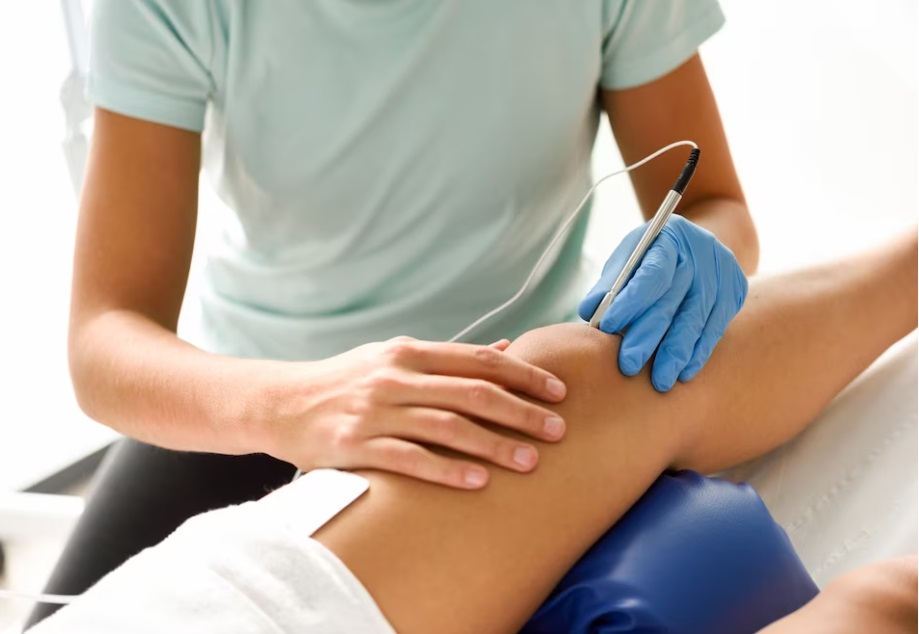
What is Arthroscopy?
In Ahmedabad, there are numerous orthopaedic hospitals. But Maruti Orthopedic Hospital is also regarded as one of Ahmedabad, Gujarat’s top arthroscopy hospitals. Dr. Viral Patel is a professional arthroscopist surgeon who performs shoulder, knee, and ankle arthroscopies using the most cutting-edge technologies at extremely affordable prices and in welcoming settings.
Arthroscopy is defined as the use of specialised arthroscopy instruments inserted through a small incision to examine the issue within a knee joint or other damaged bodily location.
- Inderstanding Arthroscopy
- Diagnostic Purpose
- Treatment Procedures
- Small Incisions
- Local Anesthesia
- Recovery Time
- Postoperative Care
- Potential Risks
- Patient Satisfaction
- Consultation and Decision-Making
Is arthroscopic surgery a major surgery?
A little operation, arthroscopic knee surgery is not. The arthroscopy involves making small, typically less than one centimeter-long incisions in the afflicted area.
If necessary, more tiny incisions can be used to implant tiny devices that can cut or save tissue from inside the joint. The photos of the interior of the joint are transmitted to a television monitor by a tiny camera positioned within the arthroscopy, which aids in the treatment of the joint. An arthroscopy surgeon in Ahmedabad can identify arthritis as well as other knee, hip, and shoulder issues.
What to expect after arthroscopic knee surgery?
Anesthesia may be used during a surgical procedure called a knee arthroscopy. Your orthopaedic surgeon will make “portals” to reach the knee joint after administering appropriate anaesthetic. The portals are typically positioned in particular places to reduce the risk of harm to nearby nerves, blood arteries, and tendons. A camera is inserted into the joint through one portal, and the patient can be treated with small instruments through other portals. Patients can frequently opt to view their procedure on a monitor to see what is causing their knee trouble during arthroscopic knee surgery under regional or local anaesthetic.
The extent of the problem and what your doctor needs to do during the knee arthroscopy operation determine how long it will take. Your knee will be bandaged softly after surgery. Your doctor may or may not allow you to put weight on the injured limb for a few days, depending on the type of surgery that was done. The majority of patients work with a physical therapist to recover quickly and to regain joint strength and motion. The technique carried out at the time of surgery and the degree of joint injury existing before to surgery will both affect the period of recovery.
Can you walk right after arthroscopic knee surgery?
The larger incisions, which were historically used for many different surgical procedures that are now frequently performed arthroscopically, were highly uncomfortable. The benefit of arthroscopy is that the surgeon using it can now execute certain surgical procedures without endangering the surrounding healthy structures. The sole hope is that by being less invasive, there will be less pain and a quicker recovery for the knees. Fast healing does not imply that you can walk immediately after the procedure. It implies that a few weeks after surgery, you will be able to walk.
Fastest Way Arthroscopic Knee Surgery Recovery Time
The fact that arthroscopic surgery minimises harm to the soft tissues surrounding the joint is one of its key advantages. In addition to reducing bleeding, edoema, and inflammation, arthroscopy of the shoulder, ankle, knee, or general surgery typically has a quicker recovery time than open surgery.
Range-of-motion and strengthening activities can typically start once the joint no longer has to be immobilised to recover flexibility and strength. Working with a physical therapist who can create an exercise and rehabilitation programme you can complete on your own at home is frequently beneficial.
By doing a search for “Arthroscopy doctors near me,” you should also make sure that you regularly follow up with a physician who does arthroscopies to keep an eye out for any new or unexpected issues and to make sure that your condition is improving as planned.
FAQ (Frequently Asked Questions)
Arthroscopy is used to diagnose and treat various joint issues, including torn ligaments, damaged cartilage, and inflammation. Commonly performed on knees, shoulders, hips, and ankles.
Recovery time varies, but many patients resume normal activities within a few days to weeks. Full recovery depends on the specific procedure and the individual’s healing process.
Like any surgery, arthroscopy carries some risks, such as infection and bleeding. However, complications are rare, and the benefits often outweigh the potential risks.
Yes, arthroscopy is a versatile procedure that allows surgeons to both diagnose joint issues through visualization and perform minimally invasive treatments during the same surgery.
Physical therapy is often recommended to aid in the recovery process. It helps restore joint function, strength, and flexibility, promoting a quicker and more effective recovery.
